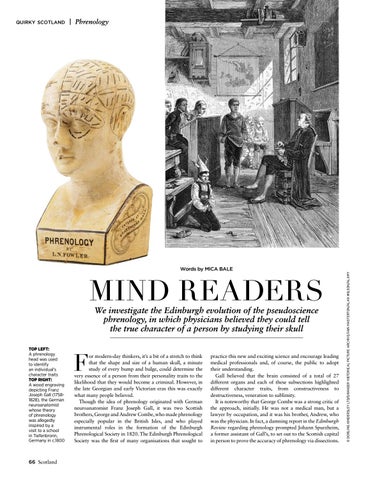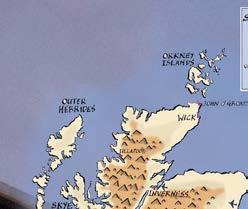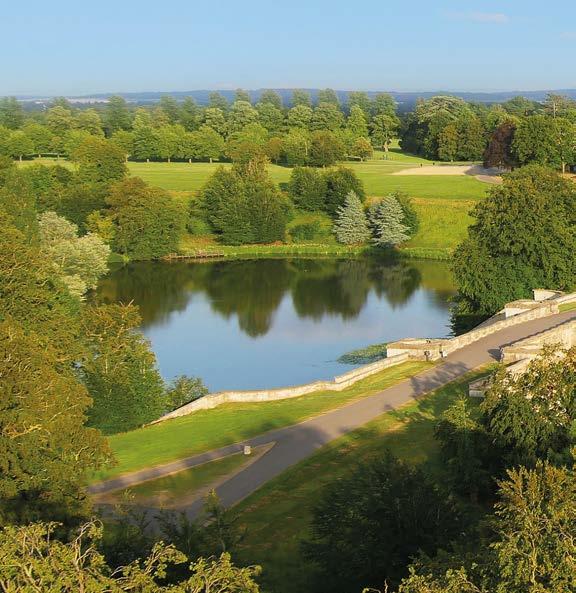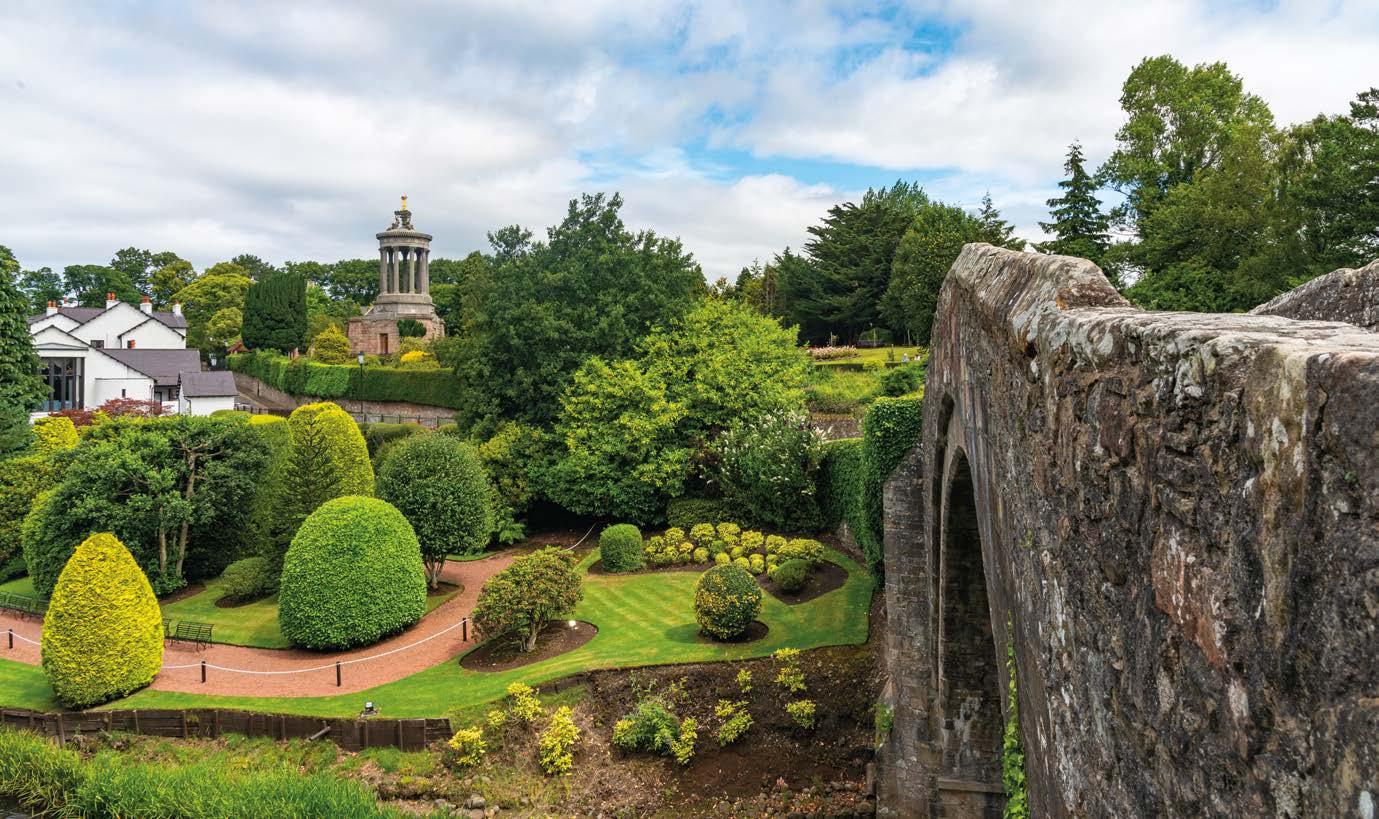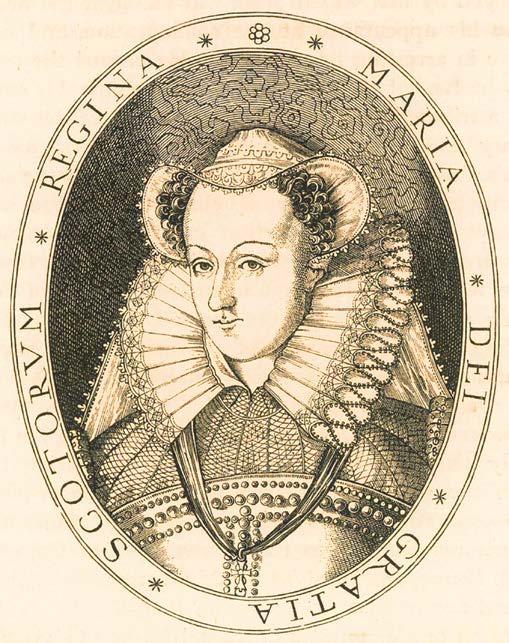quirky scotland
| Phrenology
MIND READERS We investigate the Edinburgh evolution of the pseudoscience phrenology, in which physicians believed they could tell the true character of a person by studying their skull
TOP LEFT: A phrenology head was used to identify an individual’s character traits TOP RIGHT: A wood engraving depicting Franz Joseph Gall (17581828), the German neuroanatomist whose theory of phrenology was allegedly inspired by a visit to a school in Tiefenbronn, Germany in c.1800
66 Scotland
F
or modern-day thinkers, it’s a bit of a stretch to think that the shape and size of a human skull, a minute study of every bump and bulge, could determine the very essence of a person from their personality traits to the likelihood that they would become a criminal. However, in the late Georgian and early Victorian eras this was exactly what many people believed. Though the idea of phrenology originated with German neuroanatomist Franz Joseph Gall, it was two Scottish brothers, George and Andrew Combe, who made phrenology especially popular in the British Isles, and who played instrumental roles in the formation of the Edinburgh Phrenological Society in 1820. The Edinburgh Phrenological Society was the first of many organisations that sought to
practice this new and exciting science and encourage leading medical professionals and, of course, the public to adopt their understanding. Gall believed that the brain consisted of a total of 27 different organs and each of these subsections highlighted different character traits, from constructiveness to destructiveness, veneration to sublimity. It is noteworthy that George Combe was a strong critic of the approach, initially. He was not a medical man, but a lawyer by occupation, and it was his brother, Andrew, who was the physician. In fact, a damning report in the Edinburgh Review regarding phrenology prompted Johann Spurzheim, a former assistant of Gall’s, to set out to the Scottish capital in person to prove the accuracy of phrenology via dissections.
© DORLING KINDERSLEY LTD/GRANGER HISTORICAL PICTURE ARCHIVE/IAIN MASTERTON/ALAN WILSON/ALAMY
Words by MICA BALE
